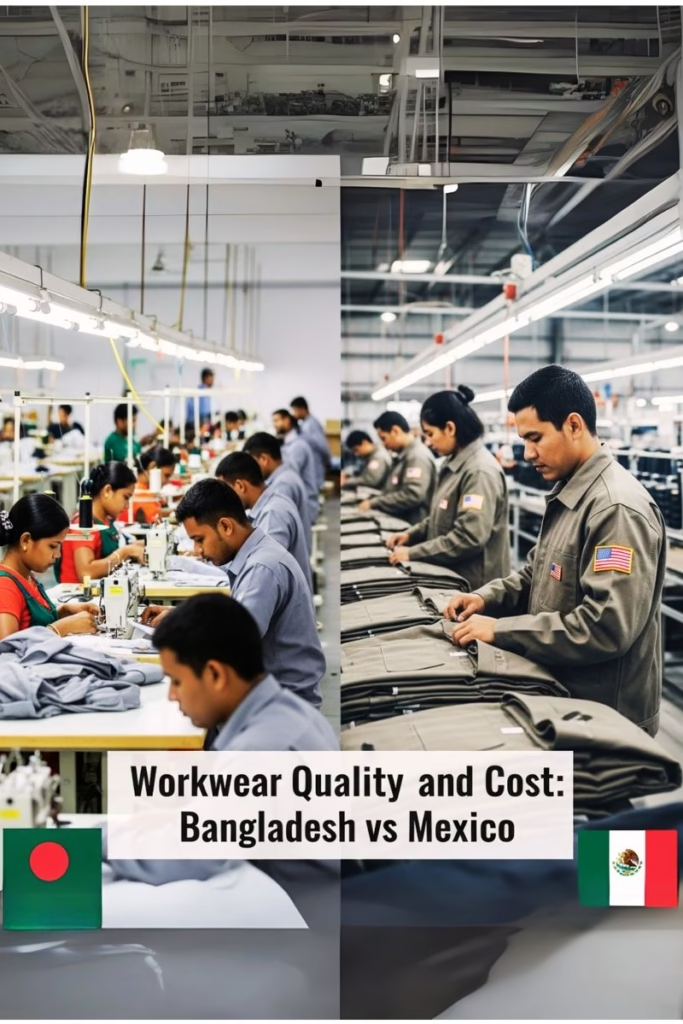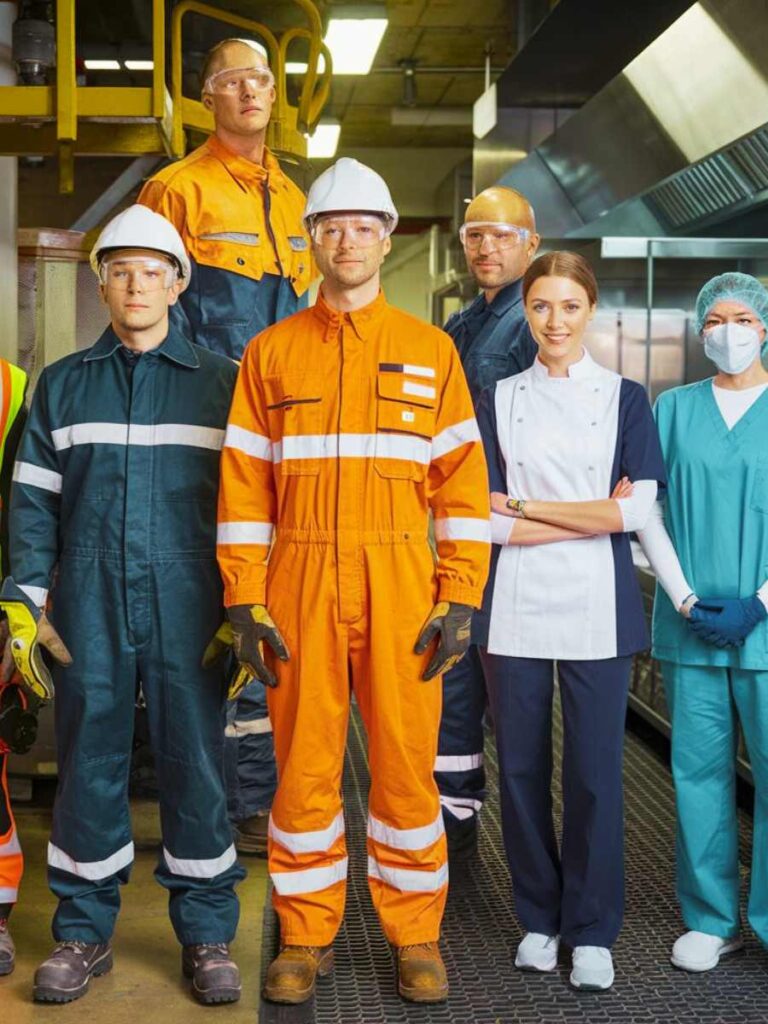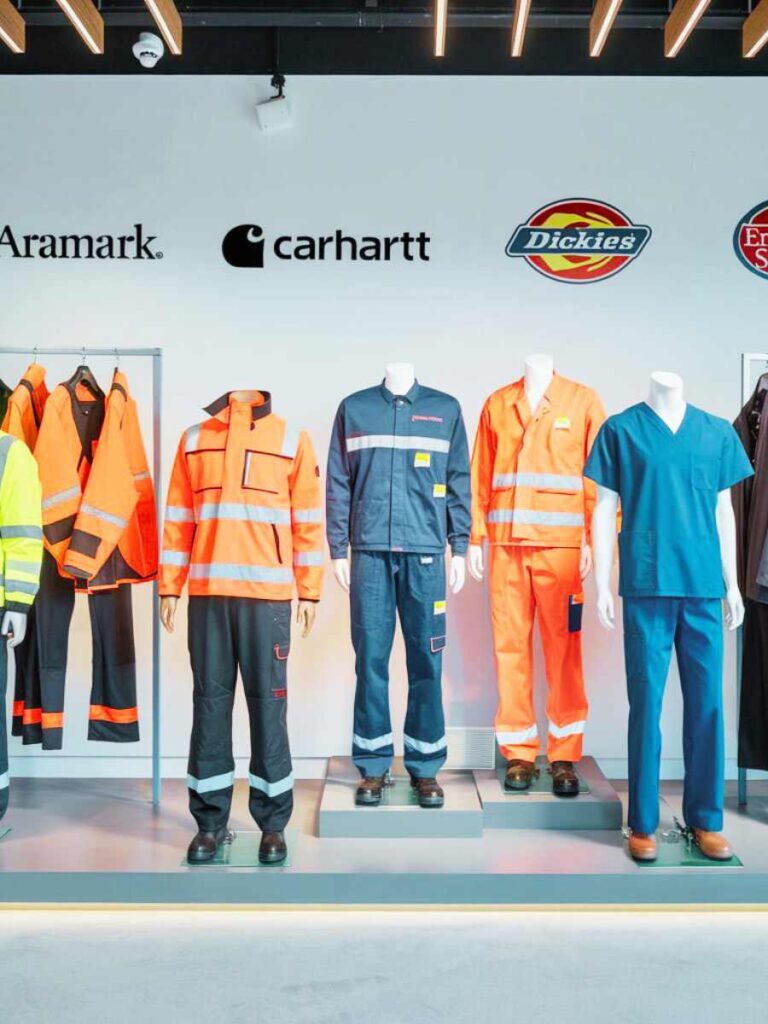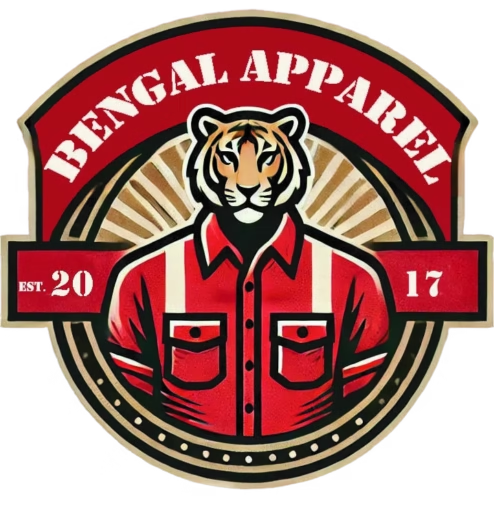The global workwear market is projected to reach $67.8 billion by 2030, making sourcing decisions more critical than ever. When conducting a comprehensive workwear quality and cost comparison, two manufacturing powerhouses consistently emerge: Bangladesh and Mexico. Both countries have established themselves as leading destinations for affordable workwear manufacturers, yet they offer distinctly different value propositions for B2B buyers.
This analysis will examine the key factors that influence your sourcing strategy, from production costs and quality standards to delivery timelines and compliance certifications. Whether you’re sourcing flame-retardant coveralls, high-visibility safety gear, or industrial uniforms, understanding these differences is essential for making informed procurement decisions.
Introduction to Workwear Manufacturing in Bangladesh and Mexico
The debate between Made in Bangladesh workwear versus Made in Mexico workwear centers on three fundamental pillars: cost efficiency, quality standards, and market accessibility. Bangladesh has emerged as the world’s second-largest garment exporter, specializing in high-volume production with competitive pricing. Mexico, leveraging its proximity to North American markets and favorable trade agreements, focuses on speed-to-market advantages and premium quality control.
For apparel sourcing managers, the choice between these manufacturing hubs often determines project success. Bangladesh excels in large-scale industrial clothing production, while Mexico offers agility and reduced logistics complexity for US-based operations. Understanding these core competencies helps align your sourcing strategy with business objectives.
Both countries have invested heavily in textile infrastructure and workforce development. Bangladesh’s manufacturing ecosystem supports over 4,000 garment factories, many holding international certifications. Mexico’s textile sector benefits from decades of North American trade integration, creating sophisticated supply chains optimized for just-in-time delivery models.
Workwear Manufacturing in Bangladesh
Bangladesh has transformed from a low-cost manufacturing destination into a sophisticated, affordable workwear manufacturer ecosystem. The country’s competitive advantage stems from several key factors that make it particularly attractive for industrial clothing production.
Labor Cost Advantages:
Bangladesh maintains some of the world’s most competitive labor rates, with average monthly wages under $120. This cost structure enables significant savings on large-volume orders, particularly for labor-intensive garments like multi-pocket coveralls, flame-retardant clothing, and high-visibility safety gear. The skilled workforce has developed specialized expertise in technical garment construction, including complex seaming, reinforcement techniques, and specialized fabric handling.
Manufacturing Infrastructure and Certifications:
The country’s manufacturing infrastructure includes thousands of facilities certified under international standards including ISO 9001, OEKO-TEX Standard 100, WRAP (Worldwide Responsible Accredited Production), and BSCI (Business Social Compliance Initiative). These certifications ensure consistent quality output and ethical manufacturing practices, addressing growing corporate social responsibility requirements.
Technical Capabilities:
Bangladeshi manufacturers excel in producing complex workwear categories, including flame-retardant clothing compliant with NFPA 2112 standards, high-visibility apparel meeting EN ISO 20471 and ANSI/ISEA 107 requirements, and multi-functional industrial uniforms. The country’s expertise extends to specialized fabric sourcing, including ripstop materials, moisture-wicking synthetics, and durable cotton blends.
Quality Construction Standards:
Made-in-Bangladesh workwear typically features double- or triple-stitched seams, reinforced stress points, and bartacked pocket openings. Manufacturers commonly use 14–16 stitches per inch for enhanced durability, with specialized techniques for high-wear areas like knee patches and elbow reinforcements.
Workwear Manufacturing in Mexico
Mexico’s position in Bangladesh vs Mexico apparel manufacturing discussions stems from its strategic advantages for North American markets. The country offers a unique combination of quality, speed, and trade benefits that make it particularly attractive for US-based buyers.
Geographic and Trade Advantages:
Mexico’s proximity to US markets enables shipping times as short as 2-5 days via ground transportation, compared to 25-40 days from Bangladesh. Under the USMCA (United States-Mexico-Canada Agreement), formerly NAFTA, Mexican-manufactured goods enter the US with minimal or zero tariffs, providing significant cost advantages despite higher labor rates.
Quality Control and Manufacturing Standards:
Mexican manufacturers typically emphasize lean production methodologies and stringent quality control processes. Facilities often implement Six Sigma practices and real-time quality monitoring systems. This focus on process optimization results in consistent output quality, particularly valuable for retail-ready packaging and brand-specific requirements.
Specialized Manufacturing Capabilities:
Made-in-Mexico workwear often features premium construction using heavyweight cotton twill, canvas materials, and specialized synthetic blends. Mexican manufacturers excel in producing uniforms for service industries, corporate workwear, and specialized safety apparel aligned with North American regulatory standards.
Flexibility and Customization:
Mexican facilities typically offer lower minimum order quantities (MOQs), often starting at 100-500 pieces per style compared to 1,000+ pieces required by Bangladeshi manufacturers. This flexibility supports smaller brands, pilot programs, and seasonal collections requiring rapid market testing.
Quality Comparison: Bangladesh vs Mexico Workwear
When evaluating workwear quality and cost comparison factors, both countries deliver reliable products but with different strengths and focus areas.
| Quality Factor | Bangladesh | Mexico |
|---|---|---|
| Fabric Quality | Synthetic blends, ripstop fabrics, technical materials | Heavyweight cotton twill, canvas, premium natural fibers |
| Construction | Double/triple reinforced seams, industrial bartacking | Industrial-grade stitching, precision finishing |
| Certifications | OEKO-TEX, ISO 9001, WRAP, SEDEX, BSCI | ISO certifications, US safety standards |
| Consistency | Excellent for high-volume orders | Superior for smaller batches |
| Customization | High flexibility in design modifications | Best for standardized styles with minor variations |
| Testing Standards | International safety compliance (EN, ANSI) | North American regulatory alignment |
Fabric and Material Standards
Bangladeshi manufacturers typically source technical fabrics including FR-treated cotton, polyester-cotton blends, and specialized synthetic materials. Quality control includes pre-production fabric testing for shrinkage, colorfastness, and performance characteristics.
Mexican manufacturers often focus on premium natural fibers and heavyweight constructions. Cotton duck canvas, twill weaves, and blended materials are common, with emphasis on durability and aesthetic appeal for corporate uniform applications.
Construction Techniques
Both countries employ advanced construction techniques, but with different emphases. Bangladesh excels in technical garment assembly including complex pocket configurations, multiple fabric panels, and specialized hardware installation. Mexico focuses on precision finishing, consistent sizing, and retail-ready presentation standards.
Cost Analysis: Which Country Offers Better Pricing?
Understanding the complete cost structure requires examining multiple factors beyond basic production expenses in any workwear quality and cost comparison.
Direct Manufacturing Costs
Bangladesh offers the most competitive per-unit costs, with savings of 20-40% compared to Mexican production for similar garments. Labor costs represent the most significant difference, with Bangladeshi wages averaging $120 monthly compared to $300-500 in Mexico.
Logistics and Shipping Considerations
While Bangladesh offers lower production costs, shipping expenses and lead times must be factored into total landed costs. Ocean freight from Bangladesh typically costs $2-4 per garment, while Mexican ground transportation averages $0.50-1.50 per piece for US destinations.
Trade and Duty Implications
Mexican manufacturers benefit from USMCA trade advantages, eliminating most import duties on qualifying products. Bangladeshi imports may face tariffs ranging from 8-32% depending on product classification and current trade policies.
Minimum Order Quantity Impact
Bangladesh typically requires higher MOQs (1,000-5,000 pieces), which can strain cash flow for smaller operations. Mexico’s lower MOQs (100-1,000 pieces) reduce inventory investment and enable more frequent style updates.
Total Cost of Ownership Analysis
| Cost Component | Bangladesh | Mexico |
|---|---|---|
| Production Cost | $8-15 per garment | $12-22 per garment |
| Shipping/Logistics | $2-4 per garment | $0.50-1.50 per garment |
| Duties/Tariffs | 8-32% of FOB value | 0-5% under USMCA |
| Lead Time Cost | 35-45 days | 5-14 days |
| MOQ Investment | High (1,000+ pieces) | Low (100-500 pieces) |
Pros and Cons of Sourcing Workwear from Bangladesh
Advantages of Bangladeshi Manufacturing
Cost Leadership: Bangladesh provides the most competitive per-unit pricing for high-volume orders, enabling significant margin improvements or competitive pricing strategies.
Technical Expertise: Specialized knowledge in industrial workwear categories including flame-retardant clothing, chemical-resistant garments, and multi-functional safety apparel.
Scalability: Massive production capacity supports large-scale orders and seasonal demand fluctuations without capacity constraints.
Certification Compliance: Extensive international certifications ensure product quality and ethical manufacturing standards.
Customization Capabilities: High flexibility in design modifications, fabric sourcing, and specialized feature integration.
Disadvantages of Bangladeshi Sourcing
Extended Lead Times: Ocean shipping requires 35-45 days total lead time, complicating inventory management and rapid response capabilities.
Communication Challenges: Time zone differences and language barriers can complicate project coordination and quality control processes.
Higher MOQs: Minimum order requirements may exceed demand forecasts for smaller brands or specialized products.
Supply Chain Complexity: Longer supply chains increase risk exposure to disruptions, weather delays, and logistics complications.
Pros and Cons of Sourcing Workwear from Mexico
Advantages of Mexican Manufacturing
Speed to Market: Rapid shipping enables just-in-time inventory strategies and quick response to market demand changes.
Trade Benefits: USMCA advantages eliminate most import duties and simplify customs procedures for US buyers.
Quality Control: Proximity enables regular facility visits, real-time communication, and collaborative quality improvement initiatives.
Lower MOQs: Reduced minimum orders support smaller brands, test markets, and specialized product development.
Cultural Alignment: Similar business practices and time zones facilitate communication and project management.
Disadvantages of Mexican Sourcing
Higher Production Costs: Labor and overhead expenses result in 20-40% higher per-unit costs compared to Bangladeshi alternatives.
Limited Capacity: Smaller production facilities may struggle with large-volume orders or rapid scaling requirements.
Fabric Sourcing: Limited local technical fabric availability may require imports, adding cost and complexity.
Specialization Gaps: Fewer facilities specialize in highly technical workwear categories like FR clothing or chemical-resistant garments.
Which is Better for Workwear: Bangladesh or Mexico?
The optimal choice in Bangladesh vs Mexico apparel manufacturing depends on specific business requirements, market positioning, and operational priorities.
Choose Bangladesh When:
- Cost optimization is the primary objective
- Order volumes exceed 1,000+ pieces per style
- Technical/specialized workwear requirements exist
- Extended lead times align with planning cycles
- International market distribution is planned
Choose Mexico When:
- Speed to market is critical
- Serving primarily US/North American markets
- Order quantities are under 1,000 pieces
- Frequent style changes or customization needed
- Just-in-time inventory strategies are preferred
Hybrid Sourcing Strategies
Many successful brands employ dual-sourcing strategies, utilizing Bangladesh for core/high-volume products and Mexico for seasonal items, quick-turn orders, and market tests. This approach optimizes both cost and flexibility while maintaining supply chain resilience.
For comprehensive guidance on global sourcing strategies, review our Best Countries for Apparel Manufacturing analysis covering additional sourcing destinations.
According to the World Bank’s textile industry report, diversified sourcing strategies reduce risk while optimizing cost structures across different product categories.
Conclusion
The workwear quality and cost comparison between Bangladesh and Mexico reveals two distinct value propositions suited to different business models. Bangladesh excels in cost-effective, high-volume production with strong technical capabilities, while Mexico offers speed, flexibility, and trade advantages for North American markets.
Success in either market requires careful vendor selection, clear quality specifications, and appropriate production planning. Both countries offer reliable manufacturing infrastructure and quality output when partnered with experienced suppliers.
Ready to optimize your workwear sourcing strategy? Contact our manufacturing specialists for customized recommendations based on your specific requirements, volume projections, and market objectives. Our global network of certified suppliers ensures quality, compliance, and competitive pricing for your next workwear project.




